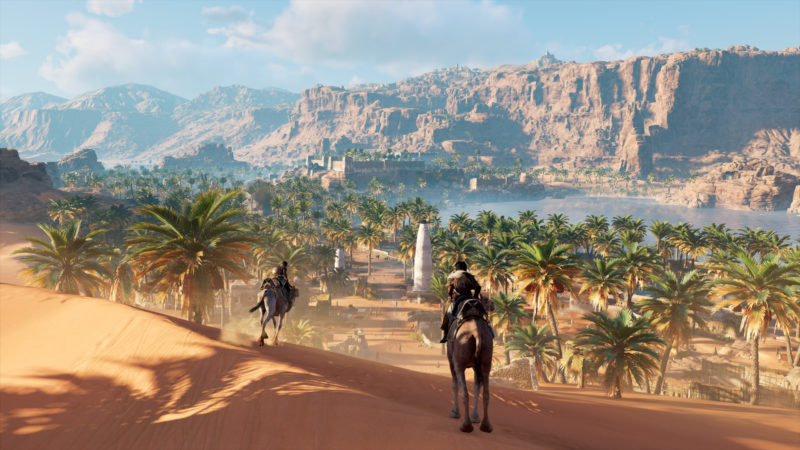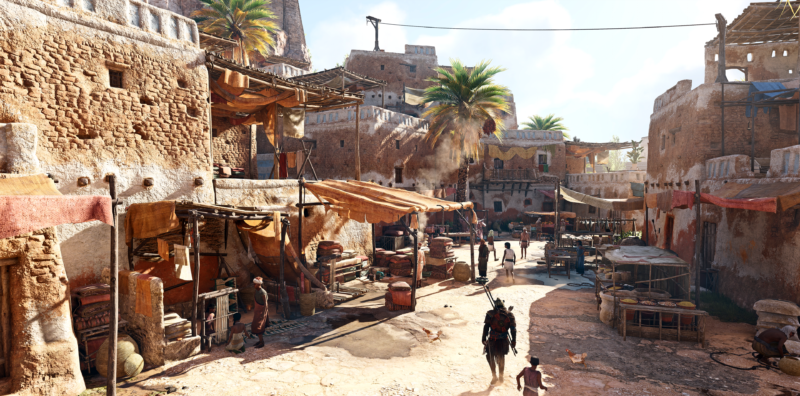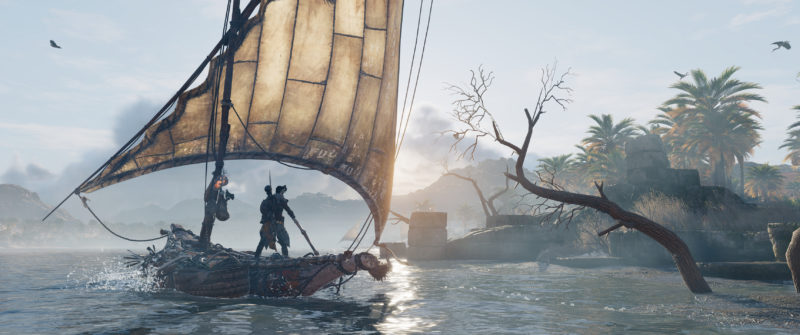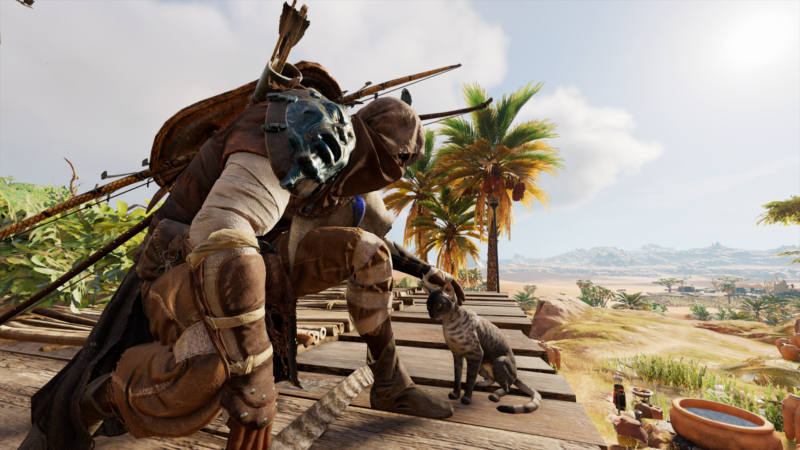With all the time we’ve spent playing Assassin’s Creed: Origins, we’ve come to love the game a lot, and noticed how much thought the developers have put into making the world an absolute delight to explore. So here are 10 things Assassin’s Creed: Origins does better than any other open world game.
Story & Characters
The stories in AC: Origins evoke the entire spectrum of emotions. Gone is the melodrama of past games in the series (and most video games in general). Instead you’ll experience stories that evoke laughter as often as they evoke anger or sadness. Characters in AC: Origins are motivated not just by being inherently “good” or “evil”, but by relatable human emotions such as vanity, rivalry, fear, loneliness, pettiness, sexuality, social awkwardness, and regret.
Side Missions
Quests feed into each other in AC: Origins in a way that matches and in some ways exceeds those in The Witcher 3. At its best, The Witcher 3 had characters from one quest that had been impacted by characters from other quests, and that consequently gave the player the feeling of discovering a culture or society, where people were affected by one another and had history with one another. AC: Origins uses this same technique, tying together the stories of characters not just between side quests but between side quests and main quests. In addition, AC: Origins features side quest “chains”, where completion of one side quest often immediately starts another, continuing the storyline with a particular set of characters.
Massive World
The game world is absolutely gigantic, on the scale of Breath of the Wild. However unlike in Zelda, the world of AC: Origins is filled out with hundreds of villages, cities, and landmarks, but most importantly stories.
Movement & Parkour
The movement system finally feels good. No more holding right trigger to sprint. No more using left trigger in conjunction with a face button to enter windows. Now you just move with the stick. Climb up onto a wall with X, and descend with O. It’s simple and it works, and I can say that I’ve rarely if ever had any instances of accidentally jumping off a building to my death, which happened quite frequently in past Assassin’s Creed games. In addition, handholds are much more plentiful and generous than they’ve ever been, putting the game closer to how you could climb pretty much any surface in Breath of the Wild. When climbing rocky terrain, you can pretty much climb anything.
Non-Linear Quests
The main questline of AC: Origins is surprisingly quite nonlinear, with multiple main story quests available to tackle at any given time. Think of it like if The Witcher 3 had allowed the player to do Velan, Novigrad, and Skellige in any order. These main quests are assigned a recommended level to be at before starting, but unlike in AC: Syndicate where main missions were functionally gated behind grinding through busywork, in AC: Origins this is more a slight push to explore and discover new locations and side quests, as pretty much everything in this game grants you some amount of XP.
Fluid Combat
The melee combat is directly inspired by the Soulsborne games, complete with light/heavy attacks, committing to attack animations, parries, and the dodge from Bloodborne. The combat system takes a little getting used to, but once you do it becomes a just-as-fun alternative to stealthing your way through encounters.
The Bow Is Badass
For the first time in the series, the player gets a bow that operates much like those found in Horizon Zero Dawn and the new Tomb Raider games. However, AC: Origins builds on this concept, adding in 4 different flavors of bow each with different firing patterns: one fires like a rifle (normal bow from those other games), one like an AR (rapid fire), one like a sniper (long range, slow rate of fire), and one like a shotgun (low range, high damage).
Fire Damage
In AC: Origins, fire behaves similarly to how it did in Breath of the Wild. It spreads through fields of grass and over objects made of wood (such as boats), and the player can light the tip of their arrow on fire by pulling out their bow and touching the arrow to a torch or other flame.
Immersion
With the health bar moved to the bottom of the screen, and the minimap swapped out for an Elder Scrolls-style compass located at the very top of the screen, overall the HUD is very uncluttered and less intrusive than it’s ever been
Player Friendly Design
Two aspects of AC: Origins are designed to keep the player out of menus and focused on the game world:
- While a world map can be found in the menus, a much more functional and aesthetically pleasing alternative is the game’s inclusion of Senu, Bayek’s eagle. Much like the drone from Watch Dogs 2, at any moment Senu can be used to soar high above the landscape to locate points of interest.
- At nearly all times, the player has the ability to fast forward between day and night with a long press of the select button (left side of the PS4 touch pad)
Thoughful Details
Similar to what you would see in a Naughty Dog game, Bayek also performs a number of contextual animations depending on the situation. These include but are not limited to:
- If the player crouches next to a cat, Bayek will pet it.
- If the player walks up to a sconce while carrying a torch, Bayek will use his torch to light it.
- If the player walks through a doorway while carrying a torch, Bayek will adjust his arm so that the torch does not touch the edges of the door.
- If the player walks through a field of grass, Bayek will reach out and run his hand through the grass.
So those are just a few of the many things we absolutely love about Assassin’s Creed: Origins. If you see anything we missed, do let us know in the comments below.
Register with us for the best in gaming, and join us for video game discussions on our forums.












